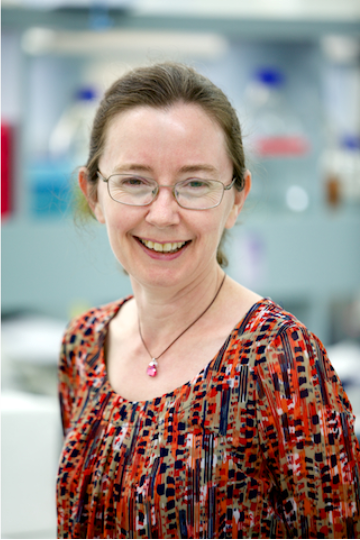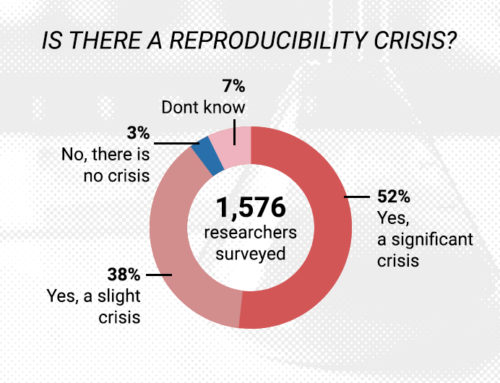Olivia interviews Amanda Capes-Davis about her new text book.
Olivia Turner, Cryoniss’ Business Development Manager interviews Amanda Capes-Davis about the recent publication of Freshney’s 8th edition, which she co-authored with Ian Freshney.
Olivia: For our readers who have not come across Freshney before, would you like to give a bit of background into how this textbook came about and how you got involved in this edition, which is dedicated to the great Ian Freshney?
Amanda Capes-Davis: (Waving to new readers, welcome!) “Freshney” is a cell culture textbook that was written by Ian Freshney. The book has been in print since 1983; many cell culture folks (including me) used it as students, and I get the feeling it is very much loved. I got involved in the 7th edition of the book when I was one of its reviewing editors. Ian then asked if I would like to work with him as a co-author for the 8th edition. Very sadly, Ian Freshney died in January 2019, so the book is a part of his legacy and is dedicated to him.
Olivia: You mention in the book the importance of understanding ‘why’ and not just ‘how’ to do a technique. Could you elaborate on this important nuance please?
Amanda: Many of us are taught cell culture through techniques – someone shows us how to passage cultures, how to freeze them, and so on. Technique is important, but it’s not the only thing to learn about cell culture. If you understand the basic principles behind the techniques – the “why” – you can change how you do things and still get good results. For example, if you need to set up a tissue culture lab in a different location, you can use basic principles to work out the best places to put your equipment to avoid contamination.

Olivia: For our readers who have not come across Freshney before, would you like to give a bit of background into how this textbook came about and how you got involved in this edition, which is dedicated to the great Ian Freshney?
Amanda Capes-Davis: (Waving to new readers, welcome!) “Freshney” is a cell culture textbook that was written by Ian Freshney. The book has been in print since 1983; many cell culture folks (including me) used it as students, and I get the feeling it is very much loved. I got involved in the 7th edition of the book when I was one of its reviewing editors. Ian then asked if I would like to work with him as a co-author for the 8th edition. Very sadly, Ian Freshney died in January 2019, so the book is a part of his legacy and is dedicated to him.
Olivia: You mention in the book the importance of understanding ‘why’ and not just ‘how’ to do a technique. Could you elaborate on this important nuance please?
Amanda Capes-Davis: Many of us are taught cell culture through techniques – someone shows us how to passage cultures, how to freeze them, and so on. Technique is important, but it’s not the only thing to learn about cell culture. If you understand the basic principles behind the techniques – the “why” – you can change how you do things and still get good results. For example, if you need to set up a tissue culture lab in a different location, you can use basic principles to work out the best places to put your equipment to avoid contamination.
Olivia: The next few questions are just some things I’ve been asked by colleagues in the lab and would appreciate your perspective as an expert in the field.
What is the potential impact of changing the medium cell lines are grown in? For example, you may purchase a line from a repository, and it says grow the cell line in DMEM, however labs change it to RPMI to accommodate a large-scale cell panel?
Amanda Capes-Davis: Cell lines behave differently when they are grown in different media. A new medium may lead to obvious changes – the cells may grow more slowly or look sick – but there are also subtle changes that you don’t see by eye. Thinking about your example of switching from DMEM to RPMI, one of these media does not contain biotin, which plays an important role in fatty acid synthesis and other processes. Switching between media with and without biotin can alter cell metabolism. It’s a good idea to keep the medium consistent if you can, or at least make sure you get a good baseline for how the cells behave in it.
Olivia: Is there any difference between FBS and FCS?
Amanda Capes-Davis: FBS and FCS both refer to the same thing – serum from unborn calves (foetuses) – but you can buy sera from other age groups including newborns, older calves, and adult animals. Foetal bovine serum is particularly popular because it is very good at promoting growth. As a side note, labs can use serum from other species apart from cattle – Wilton Earle, who was one of the early pioneers of cell culture, kept horses at home and would take blood samples from them as his lab’s source of serum. (Commercial sources of serum cut out many laborious cell culture tasks as well as improving quality and consistency!)
Olivia: Why is some FBS so much more expensive than others?
Amanda Capes-Davis: Availability of FBS is subject to a lot of things including drought and diseases that affect source herds. Sera from certain countries (like New Zealand) are also preferred due to lower rates of disease. All of those supply factors affect the price. Increased demand is also a concern as more labs use FBS – the number of animals that are used to make it will increase, which is against what we strive for in ethical terms. Replacement, reduction, and refinement (the 3Rs) apply to serum as well as laboratory animals.
Olivia: What are your thoughts on non-animal by-product containing cryopreservants?
Amanda Capes-Davis: As a general rule for cell culture, we need to move away from animal products if we can. There are ethical reasons, as I mentioned with FBS, but animal-based products also vary from lot to lot and can introduce microbial contaminants. The challenge with cryopreservation is that serum works really well at keeping cells viable; it takes time and effort to optimise the process without it. However, serum-free conditions have been achieved for human pluripotent stem cells and other fussy cell types, so they’re certainly achievable.
Olivia: Do you use L-glutamine or Glutamax?
Amanda Capes-Davis: It depends how long I want my medium to last! GlutaMAX is a glutamine dipeptide, which can be substituted for L-glutamine. The difference is that GlutaMAX is more stable at 37oC, so it lasts longer.
Olivia: Is there a cell line which you find particularly difficult to work with, what are the reasons for this? And what would you consider to be the most difficult cell line to maintain in culture?
Amanda Capes-Davis: Slow growing cell lines are super-frustrating. Most of the experiments in my PhD were done using a slow growing cell line (TT from thyroid), and it took ages to grow enough for each experiment. Since that time, though, I have come to realise that fast isn’t always good. A cell line that grows quickly, like HeLa, may be quite abnormal in its behaviour – and is often the culprit when other cell lines become cross-contaminated.
Olivia: What is the key to successful organoid culture/ induction of organoids in vitro?
Amanda Capes-Davis: Getting the cells to interact together in three dimensions. The classic experiments were done by scientists way back in the 1950s, using what they called the “watch-glass” method – basically putting the cells in a curved glass dish so they came together through gravity. Today’s spheroid multiwell plates use the same principle but have special coatings to stop the cells sticking to the surface of the plate.
Olivia: Do you believe that organoids and/or cell/tissue-based technologies such as organ-on-a-chip systems could ever fully replace the need for animal models in research?
Amanda Capes-Davis: It’s a tall order. Complex organisms are … well … complex. For example, if you want to develop a new drug to treat a disease, you need to understand how the drug is metabolized in the body and then adjust for that in your culture system. But based on existing models, I believe it will be possible. One of the examples we highlight in the book is a small airway chip that can be used to model cigarette smoking – you literally load up a machine with cigarettes that “breathes” the smoke into the chip, where the cells gently move up and down with the breathing motions. It’s an amazing model to study smoking-related lung diseases.
Olivia: What would you consider to be the best 3D culture procedure/ technology to optimise culture growth?
Amanda Capes-Davis: “Best” is tricky because it varies with different cell types. For some cell types (particularly tumour cells), I would try putting cells into a “forced floating” environment to get them to interact in three dimensions. Many organoid cultures are grown that way – there are some lovely cerebral organoid models where cells are embedded in droplets of Matrigel and gently agitated using spinner or shaker culture. But many 3D culture techniques favour differentiation over growth. Always think about what you want to achieve and what the cells need from their environment, aiming to reproduce their physiological environment as far as possible.
Olivia: Universities do not provide extensive cell culture practice, what advice/tips would you give to students hoping to pursue an interest in research using cell and tissue culture? What are your 10 golden rules for cell culture?
Amanda Capes-Davis: We list twelve “golden rules” in the last chapter of the book, but that list is probably too long for this interview. The most important thing in technical terms is to learn good aseptic technique to minimise contamination. In career terms … today’s science is rapidly changing and it’s easy to become redundant. Think about what you’re good at and keep building expertise in those areas. And look after your body; ergonomics is a big issue for cell culture, due to the long periods of time we all spend doing manual tasks. Be mindful setting up your workspace and take regular breaks to stretch.
Olivia: The hotly debated question (everyone I ask gives a different answer) – WHERE TO PUT THE CAP when you cannot hold it? Where is the safest place/ position to put the cap of a flask, whilst the flask is open?
Amanda Capes-Davis: Such a good question! If you put the cap face-down, you risk transmitting contaminants from the work surface to the inside of the cap, or vice versa. If you put it face-up, there is a risk from airborne contaminants, but that risk is low if you are handling cultures in laminar airflow. If you are working in a BSC or laminar flow hood, we recommend you put the cap face-up toward the back of the working area.
Olivia: What can you do if you over-trypsinise your cells? Is there a way of recovering them?
Amanda Capes-Davis: Trypsin is damaging to cells, so over-exposure may kill off some of the cells in the culture. The remaining cells may recover (especially if you replate them in a smaller area), but you won’t get back the missing populations. It’s important to freeze down stocks as early as you can, so you can return to earlier passages if needed. If your cells are super sensitive to trypsin, you might try cold trypsin – the enzyme comes into the cell through pinocytosis, which is inhibited at 4oC, so it’s less damaging at that temperature. Apart from that, there are many other enzymes and methods that can be used to lift your cells.
Olivia: Are cells altered at all by extended periods of time in frozen conditions ( ie 20+ years, will they still function EXACTLY as they would prior to freezing?)
Amanda Capes-Davis: The magical temperature to consider when storing cells is the glass transition temperature, which for a 10% solution of DMSO is about -132oC. Below the glass transition temperature, the cells are basically in stasis, so you can store them for decades with minimal effect. This is why cells are stored using liquid nitrogen, rather than keeping them in a -80oC freezer. But for their function to be maintained, you also need to use suitable cryopreservation and thawing techniques. Lots to consider there as well.
Olivia: During one of my projects, a client was hoping to use a cell line which was no longer available to purchase from UK cell banks- why are some cell lines discontinued?
Amanda Capes-Davis: Usually, a cell line is discontinued because the cell bank found a problem with it. It might be as simple as the cell line not growing well – cell banks use procedures that are designed to maximise the number of vials available, but cells are quirky and it’s possible for demand to exceed supply. But in many cases, it’s because the cell bank discovered that the cell line is misidentified. We have access to more sophisticated testing methods compared to when these cell lines were first banked (and bigger datasets for comparison), so it’s not uncommon for a problem to be found on re-testing that wasn’t recognised earlier.
Olivia: What is the most common way cell cultures become contaminated? What are the common mistakes?
Amanda Capes-Davis: The three commonest mistakes are: (1) handling different cell lines at the same time; (2) using the same medium/reagent bottles for different cell lines; and (3) long-term antibiotic use. The first two are problems because it’s easy to transfer cells from one cell line to the other, leading to cross-contamination, or a microbial contaminant such as mycoplasma. Contaminants are spread through small droplets, which occur even if you are using laminar airflow. Antibiotics can suppress microbial contamination, which means the problem is harder to see but still transmissible between cultures. If you grow cultures in antibiotic-free media, it’s easier to see the affected cultures and you can get rid of them before the problem spreads.
Olivia: Is it possible to completely remove infection (mycoplasma/fungal/bacterial etc) from an infected culture? If a very expensive cell line becomes infected and you cannot replace them i.e.. no frozen stocks/ cannot buy more – what do you do?
Amanda Capes-Davis: We provide protocols in the book for treating microbial contamination and specifically for mycoplasma; the mycoplasma protocol notes that about three-quarters of treated cell cultures can be “cured”, provided you use a suitable treatment agent and protocol. But there is a risk that treatment is not effective or that the contamination spreads to your other cultures while it is in progress. Many mycoplasma species enter the cell, which gives an intracellular reservoir that also needs to be eliminated. Discarding the culture is safer. If you proceed, you must continually test your cultures to ensure that the problem does not recur.
Olivia: You have a chapter on automated cell culture, do you think automation will ever replace the bench scientist?
Amanda Capes-Davis: For some applications, yes. If you are using a cell-based assay – one where you keep working with a particular cell line using a standardised protocol – then it makes sense to automate it. It also makes sense to automate the preparation of cell-based therapies, where procedures need to be highly consistent and every step needs to be documented. But for other applications, the bench scientist has the advantage. Those of us who work with different cell types are constantly thinking on the run and modifying procedures based on how our cells look. That kind of flexibility is important for good cell culture.
Olivia: What single piece of advice would you give to a student who is struggling with cell culture?
Amanda Capes-Davis: You are not alone. Everyone who has ever done cell culture struggles with it sometimes. Write down everything – keep a log each time you do cell culture and look for trends that might explain why you are having problems. Is it always the same incubator? Did it start when you opened a new medium bottle? Talk to other people using the same tissue culture space. And test your cells – I can’t tell you how often a cell line mystery is due to contamination. The more data you have, the more you can understand your cells.
For those readers who have not come across Freshney before, this version covers:
- Every essential area of animal cell culture, including lab design, disaster and contingency planning, safety, bioethics, media preparation, primary culture, mycoplasma and authentication testing, cell line characterization and cryopreservation, training, and troubleshooting
- Features a wealth of new content including protocols for gene delivery, iPSC generation and culture, and tumour spheroid formation
- Includes an updated and expanded companion website containing figures, artwork, and supplementary protocols to download and print



